The beauty of working space technology

In recent days, a large number of photos and videos from the launches of various rockets have appeared. I bring to your attention a selection of, in my opinion, the most beautiful ones with comments.
Soyuz-FG
On KDPV there is a photo of the super moon above the Baikonur Cosmodrome, where the Soyuz-FG launch vehicle with the Soyuz MS-03 spacecraft was preparing for launch (photo by NASA / Bill Ingalls). In dynamics, it looks even more impressive:
In the second half of the video, service farms are driving around the rocket. Bulbs on them are not needed for beauty - people will work there, preparing the rocket for launch.
Photos from the launch at Bill Ingalls (NASA / Bill Ingalls) also turned out to be excellent. Soyuz uses liquid oxygen as an oxidizing agent, in this case the thermal insulation of the tanks is optional, but evaporated oxygen must always be vented before starting. If you take a photo with a long shutter speed, you get a slightly surreal haze:
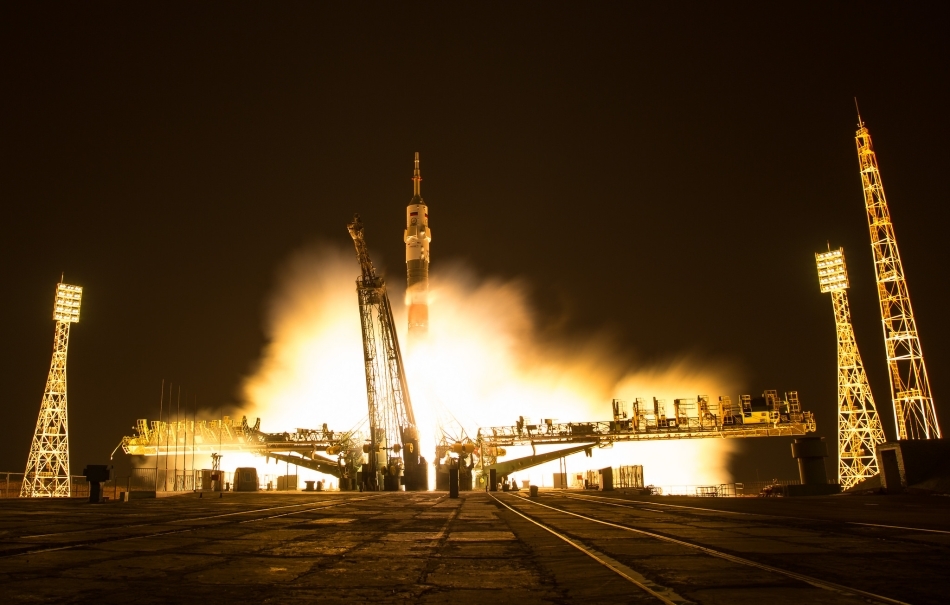
This is the same photo in high resolution
The launch of the launch vehicle is carried out in three stages, and the words "Preliminary, intermediate, main, rise!" sound on Baikonur for 69 years. At the first stages, kerosene does not burn out completely, and you can catch the moment when there is a sea of fire under the rocket. It is not at all dangerous when the engines reach full thrust, there will only be a train of flame behind the tail of the rocket.
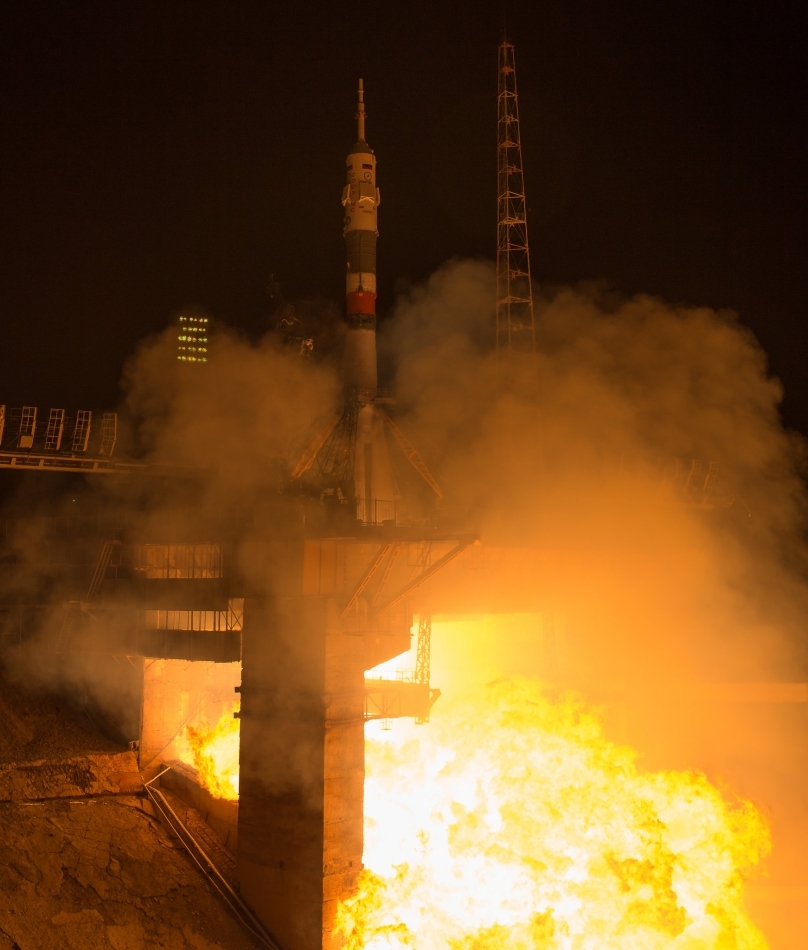
The same photo in high resolution.
With a long exposure, the flame tail seems small. The correct column - the trail of the rocket - shows the normal operation of the control system. If you look at the first seconds of the flight of the Soyuz rocket, you can sometimes see how it “waves” the steering engines, fending off a gust of wind or other random disturbance. But the flight path will remain straight.
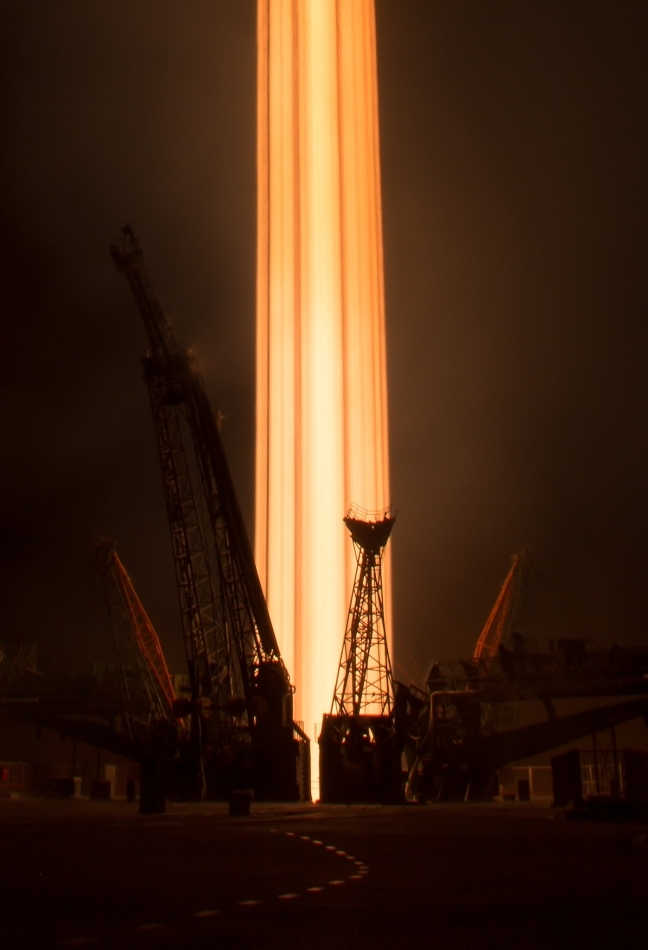
The same photo in high resolution.
Ariane v
On November 17, the seventy-fifth consecutive successful launch of the Ariane V launch vehicle with four Galileo navigation satellites took place. This time, the rocket launched in a rare configuration, when instead of a cryogenic upper stage, a block on high-boiling heptyl and amyl stood on it. Poisonous, they have the advantage that they can be stored in tanks for a long time at room temperature without thermal insulation. The following photos are from ESA / Stephane Corvaja ( source ).
This photograph can be called “Four Elements” - in the frame there is land (indirectly, in the form of launching facilities), water, air and fire. From the point of view of the engineer, the routine operation of irrigation of the start is performed here to protect against acoustic and thermal loads.
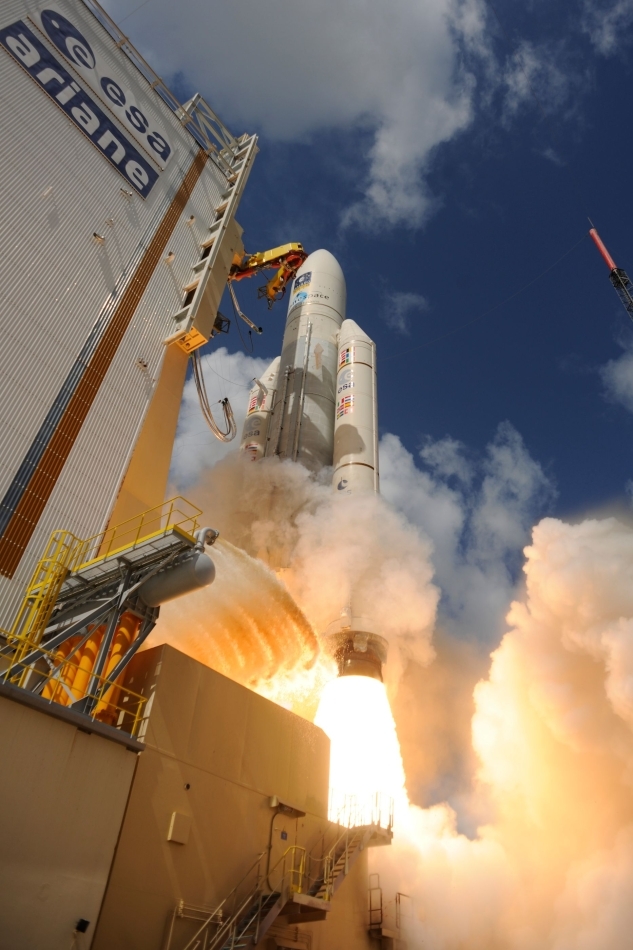
The same photo in high resolution.
The productivity of the irrigation system is estimated at cubic meters per second, and at the start a titanic battle of fire and water takes place.
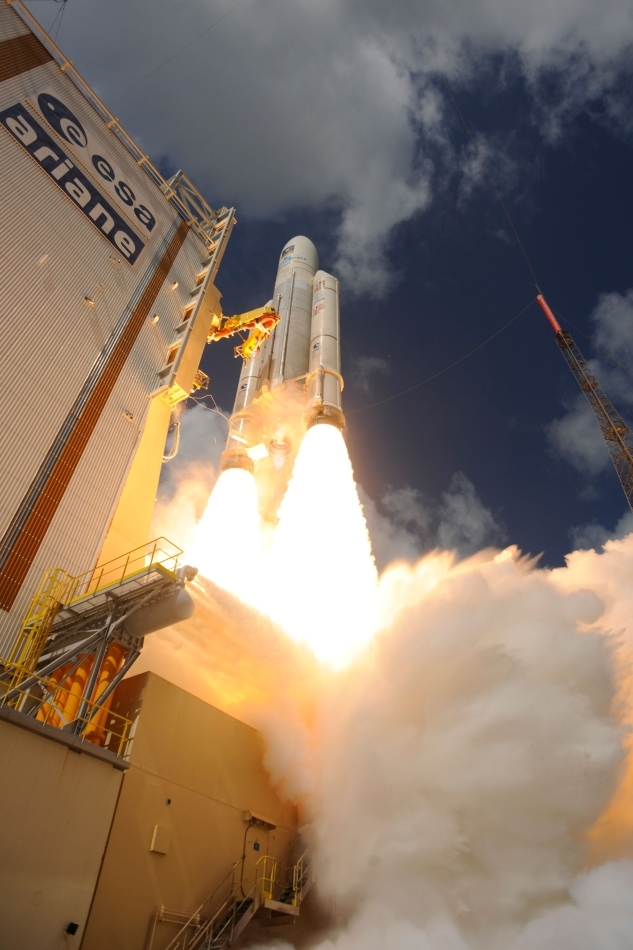
The same photo in high resolution.
And in this photo we can almost look inside the engine. The Ariane V central unit runs on a hydrogen / oxygen fuel pair that produces an almost colorless flame. The side boosters are solid fuel, their flame is very bright, with a lot of smoke, but the inner surface of the nozzle is clearly visible through the flame of a centrally working engine. The balls near the nozzle are balloons of the pressurization system of tanks, there is helium under high pressure.
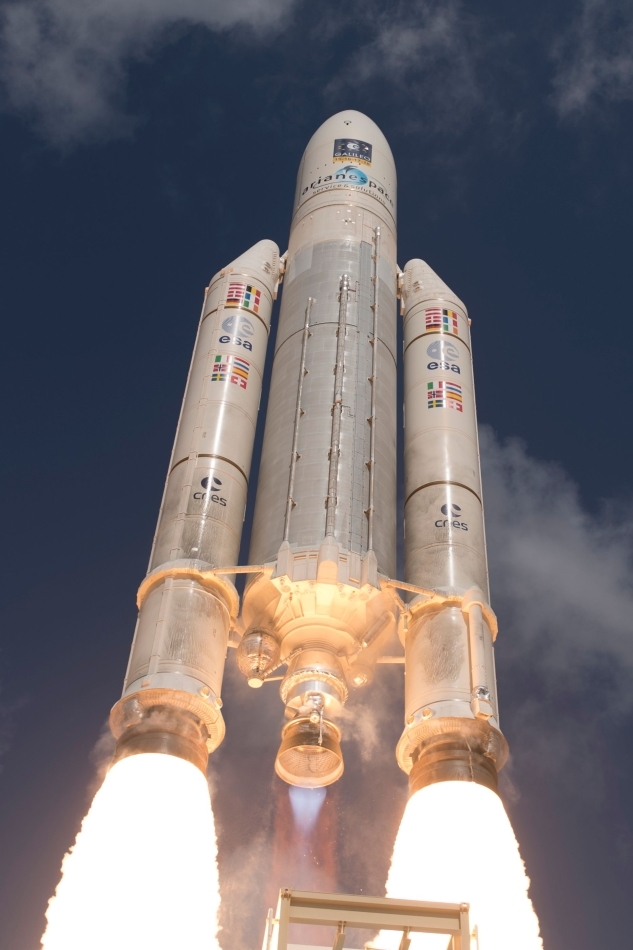
The same photo in high resolution.
Atlas V
On November 19, the Atlas V launch vehicle launched with the GOES-R geostationary meteorological satellite. Next, the United Launch Alliance ( source ) photo .
There is liquid oxygen on the central unit without thermal insulation, as well as on Soyuz, therefore, here you can also see ice falling from the launch rocket.
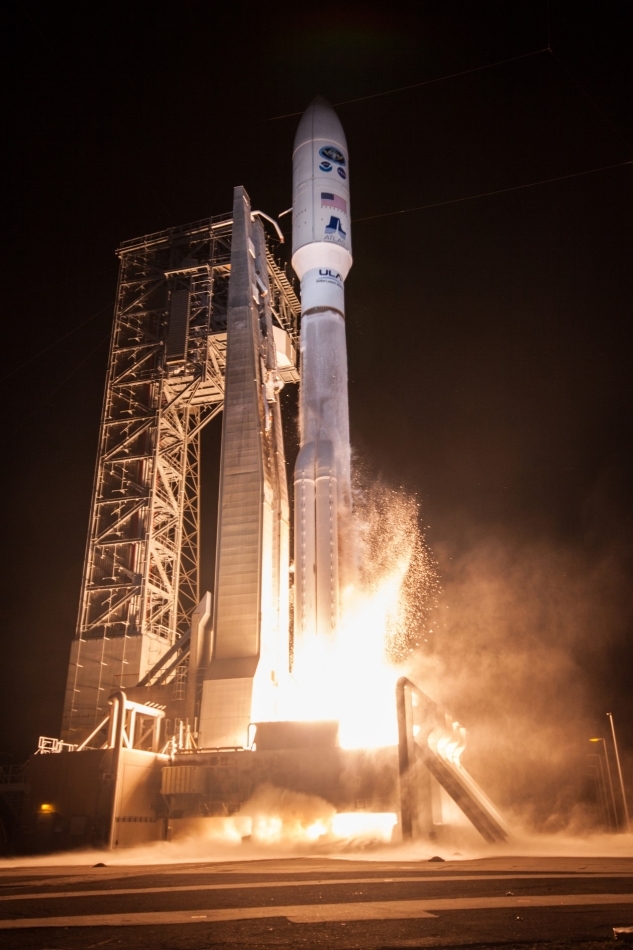
The same photo in high resolution.
Side boosters are solid fuel, and at night start you get beautiful white clouds that look almost solid.
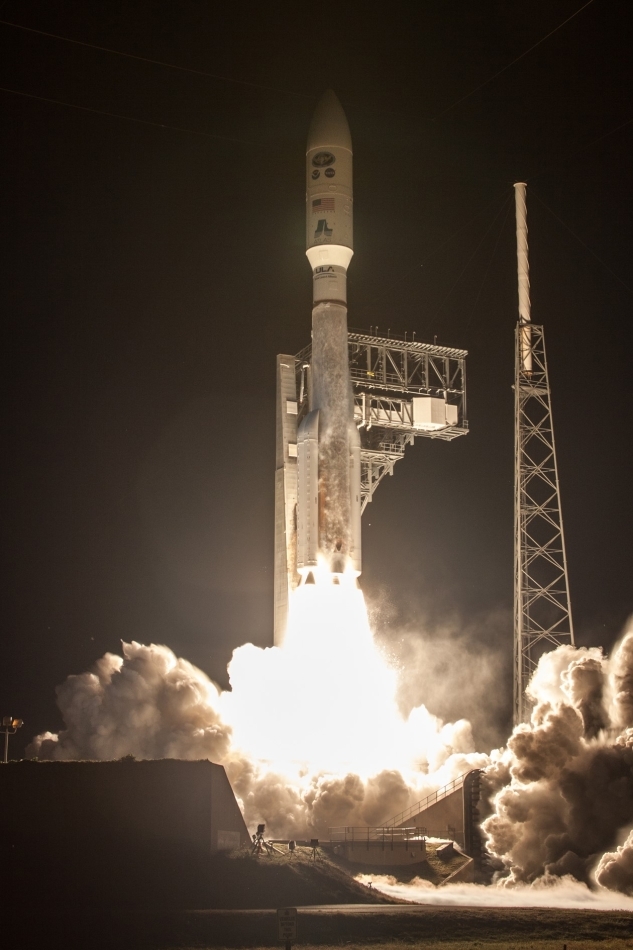
The same photo in high resolution.
And here you can clearly see the cables and masts of lightning rods protecting the start.
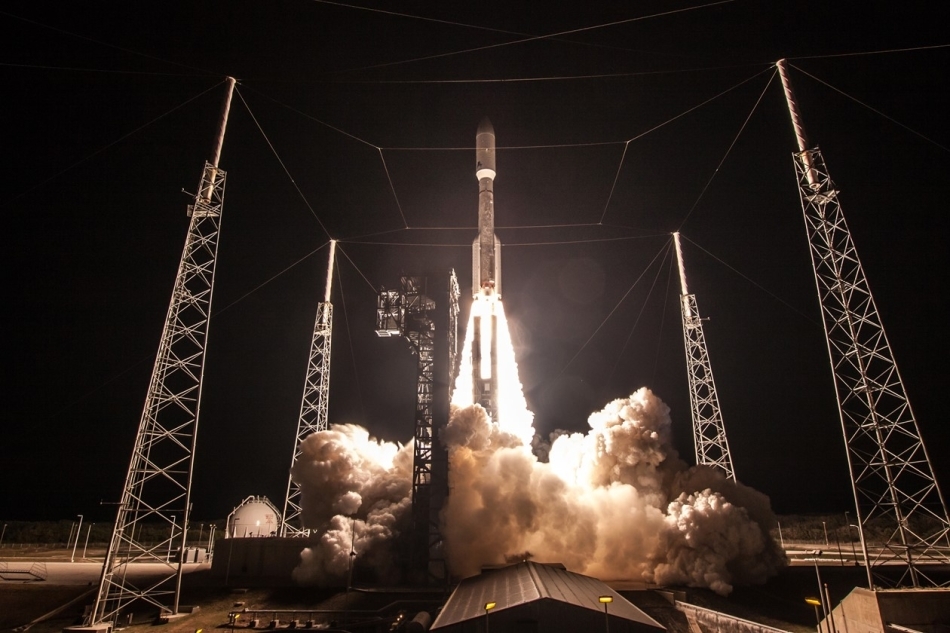
Advanced video cameras were on the rocket, so the shots of the satellite’s separation from the upper stage were already far from the Earth, in geo-transitional orbit, and they turned out to be very beautiful too. Small particles on the video - banal ice. The Centaur booster unit runs on liquid hydrogen and oxygen, there is thermal insulation, but still there are enough cold elements on which moisture from the atmosphere is deposited with ice before starting.
